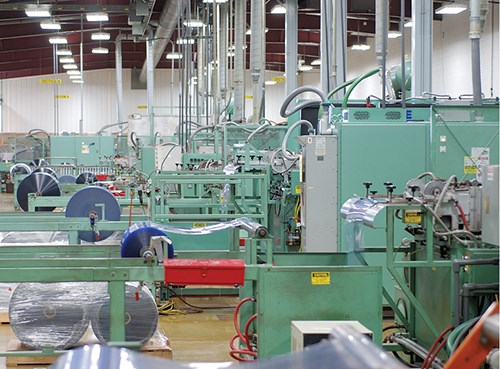It Ain't Easy Being Green
But efforts by packaging processors to become more sustainable will be worth it.
I don’t think sustainability or the environment were what Sesame Street Muppet Kermit the Frog had in mind when he sang this song so full of lament. But for plastics processing—packaging in particular—it sure ain’t easy being green. It’s expensive, it can be frustrating, but at some point in time it’s going to be worth the effort.
This issue marks the first of Plastics Technology’s four-part series on sustainability. Our approach is to focus on major end markets for plastics products and to take a look at what processors serving those sectors are doing to make their products more sustainable. This month’s end market is packaging. We focus on the sustainability efforts made by a film/sheet extruder, injection and blow molder, and a thermoformer. The series begins an article by Jeff Wooster, sustainability leader in flexible packaging for Dow Plastics North America. You can navigate to all of the articles in this series from the Editors Picks box on the right-hand side of this page.
The next installment of this series is June, when the focus will be on medical manufacturing. Then in September, construction; and December, automotive. If you’re a processor that has initiated a sustainability program and participate in any of these markets, let me know via email at jcallari@ptonline.com.
As this month’s installment shows, sustainability comes in many shapes and forms: increased use of post-consumer recycled material; package redesign, energy savings, use of more biobased materials, etc. Once upon a time, as I have previously admitted, I viewed sustainability as the latest fad in plastics that would simply go away when the environmentalists found something else to worry about. I was wrong; it’s here to stay, and is only in its embryonic stages.
Notes Dow’s Wooster, “Plastics processors, especially in the packaging industry, have a responsibility to make sustainable production a key part of their business practices. As such, sustainability has to be far-reaching and ingrained into every decision a company makes. It’s not an attribute unto itself, but rather a holistic way of thinking about a product’s entire lifecycle.”
The challenge in packaging, though, might be a bit different than in other markets. With all due respect to what the consumer-marketing gurus have been saying for years, the package is not, after all, the product, but the receptacle that holds it. This is making it difficult for processors that have spent time, money, and other resources on sustainability to reap any rewards. When I met with
Chandler Slavin, sustainability/marketing coordinator at thermoformer Dordan Manufacturing, she put it this way: “If sustainability for our customers is not a purchasing priority, if consumers won’t pay more for sustainable products and packaging, and if we are but a fraction of the contribution to the carbon footprint associated with the products we package, why do we continue to invest so heavily in it?”
It might take some time for this question to be answered. For Dow’s Wooster, things are clear: “The financial advantage of implementing sustainability practices is undeniable. The formula for finding the ideal balance of resources expended versus value to the customer is the key to delivering the most profitable results in terms of revenue generated and environmental advantages delivered. A product’s value goes well beyond its cost. Conserving resources and reducing waste while delivering strong results is financially advantageous to processors.”
Related Content
What to Look for in High-Speed Automation for Pipette Production
Automation is a must-have for molders of pipettes. Make sure your supplier provides assurances of throughput and output, manpower utilization, floor space consumption and payback period.
Read MoreIn Sustainable Packaging, the Word is ‘Monomaterial’
In both flexible and rigid packaging, the trend is to replace multimaterial laminates, coextrusions and “composites” with single-material structures, usually based on PE or PP. Nonpackaging applications are following suit.
Read MoreHow to Extrusion Blow Mold PHA/PLA Blends
You need to pay attention to the inherent characteristics of biopolymers PHA/PLA materials when setting process parameters to realize better and more consistent outcomes.
Read MoreMultilayer Solutions to Challenges in Blow Molding with PCR
For extrusion blow molders, challenges of price and availability of postconsumer recycled resins can be addressed with a variety of multilayer technologies, which also offer solutions to issues with color, processability, mechanical properties and chemical migration in PCR materials.
Read MoreRead Next
Sustainable Sheet: Placon Closes the Loop on PET Recycling
Placon reprocesses up to 12,000 lb/day of PCR PET to produce its EcoStar line of sheet.
Read MoreSustainable Injection Molding: Amcor and the Big Picture
How the world’s biggest producer of PET packaging measures the environmental footprint of its operation.
Read MoreSustainable Thermoforming: Efforts at Dordan
Family-owned former has been in the forefront of sustainable thermoforming and package design for years. Has it been worth the effort?
Read More















